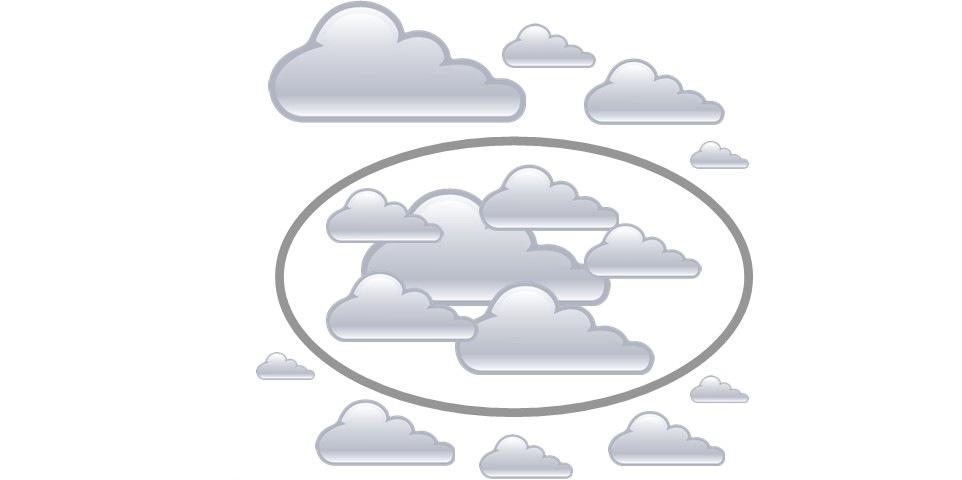Changes Required By The Model Of Cloud Computing

Cloud Computing and SaaS will profoundly affect the current business model of sales of hardware and software middleware channel. Surely some of these channels will survive and even expand, but many will be on the way … Why?
Well generally, I understand that there are three basic models of channels:
The simple “box move”, which basically sells hardware and software, without further involvement with support services and integration, competing solely on price, those that do, besides the sale, support services and integration. The channels devoted to services that can be ISVs (application providers) or integrating companies, which add to the sale of one or more hardware and software applications and related implementation services. The latter channels compete on the basis of the aggregate value of the solution.
Although the value propositions of the three channel types differ, the basis of their business model is a partnership with the provider of hardware and software, middleware, so that they can buy their products at a lower price and consumers would pay going directly to these providers. Depending on the type of channel, profitability depends primarily on the amount of the discount provided by your hardware and software and the size of the contract implementation and support.
Of the three types of channels, it seems obvious that the first kind, “box move” runs a huge risk of disinter-mediation and simply disappear. The second type are still at risk. Especially when your clients migrate to SaaS applications. Already channels focused on services have great opportunity to become partners for Cloud Providers and SaaS Providers.
But what changes will we see in business models? The table below summarizes what is the business model of a current channel and what should be in the world of Cloud and SaaS:
- Current model
- Model Cloud / SaaS
- Cash Flow
- Receive delivery
- Monthly Payments
- Performance model
- Transactional sales and technical role
- Business Partner
- Emphasis on sales
- Product
- Services
- Emphasis Support
- “Break / fix”
- Guided by SLA
What these changes mean?
Take, for example, the cash flow. The SaaS model implies revenue ping over time and probably at lower margins than the current ones. This model also eliminates the implementation services and version upgrades, since the software is hosted in the cloud provider’s application.
The channels that make money with this activity will have to replace it with integration services with other SaaS applications. Should focus more on application functionality (more focused on the customer’s business) and less on technology issues. Customers who hired dedicated servers and technical support to install and upgrade their operating systems with the use of public clouds, eliminate these activities, which are now handed over to the cloud providers.
The relationship becomes less transactional and more oriented to a business partnership. The sale is no longer merely a product (how the customer will use it is now indifferent to the channel …) to be a contract of services with added value. For example, for software marketed by the SaaS model, it is not a necessary intermediate channel sales, as these are made directly by the provider. But the channel can provide additives, such as extensions of specific functions, training and consulting in the use of the application.
A simple analogy can be compared with the travel agencies. Before the web, you need these intermediates. With airlines selling directly over the Internet, the role of agencies had to change radically. Just sell tickets became totally expendable.
Let us now look at segment sales of servers. Before the Cloud Computing model, the customer segment of small to medium business (SMB) needed a sales channel, because the hardware providers had no capillarity to serve them. In the cloud model, to acquire a virtual server, just go to the portal provider of cloud and in minutes get a server and the channels must be transformed into value-added businesses.
Of course every change brings some challenges. The channels must, above all, have to rethink about themselves, defining what they want to be. And some conflicts may arise, for example, an overlap of roles between the channels and SaaS providers.
Where does the role of one end and the other begins? Who is the customer? Who can sign a SLA with the customer?
Finally, the channels are facing challenges and opportunities. The channels that make the successful transition can become agents with the new environment.
The other … Let’s See…
- How Cloud Computing Is Changing The Labor Market - March 25, 2015
- Adopting Infrastructure as a Service Can be a Good Deal - March 17, 2015
- Will Virtualize? Take These Six Points Into Consideration - March 12, 2015